


This article addresses the management of fast heart rates, particularly tachycardia, in elderly patients. It highlights the importance of recognizing symptoms and understanding the various types and causes of tachycardia. By implementing personalized treatment plans and making lifestyle changes, we can significantly enhance the quality of life for older adults facing these cardiovascular challenges.
Are you or a loved one experiencing a fast heart rate? It's essential to know that you are not alone, and there are effective ways to manage this condition. Understanding the symptoms and seeking appropriate care can make a world of difference.
In addition to medical treatment, lifestyle modifications can play a crucial role in managing tachycardia. Simple changes, such as:
can lead to significant improvements. Remember, every step you take towards better health is a step worth celebrating.
Furthermore, it’s vital to have open conversations with healthcare providers about your concerns. They can help create a tailored plan that suits your individual needs, ensuring you feel supported every step of the way.
Ultimately, recognizing and addressing tachycardia can lead to a more fulfilling life. Don’t hesitate to reach out for help; there are resources and support systems available to guide you through this journey. Together, we can work towards a healthier future.
Understanding fast heart rates, particularly tachycardia, is essential for elderly patients who may encounter unique health challenges. When the heart races beyond its normal threshold, it can indicate both common and serious underlying conditions that necessitate timely intervention. This article explores the various types of tachycardia, their symptoms, and effective treatment options tailored for older adults. By emphasizing the importance of early recognition and management, we hope to support caregivers and patients alike.
How can we navigate this complex landscape together to ensure optimal heart health and enhance quality of life?
Tachycardia, defined as a pulse rate exceeding 100 beats per minute in adults, can be a source of concern, particularly for older individuals. It may arise from various situations, such as stress, exercise, or excitement, and while it can be a normal response, it might also indicate underlying health issues like arrhythmias or valve disease. Recognizing common symptoms such as palpitations, dizziness, and fatigue is crucial for elderly patients, as these signs can signal when it’s time to seek medical attention.
Understanding tachycardia is vital, especially since older adults may have different thresholds for what constitutes a concerning pulse rate due to age-related changes in cardiovascular function. If left untreated, these conditions can lead to serious risks, including stroke or heart failure. At Amavita Cardiovascular and Vascular Health, we are dedicated to providing compassionate care. We specialize in and fast heart rate treatments, as well as minimally invasive valve treatments.
Our advanced technologies and patient-centered approach ensure that older individuals receive effective therapies, such as fast heart rate treatments, tailored to restore their body’s natural rhythm. We are here to enhance your overall quality of life, and we encourage you to reach out if you have any concerns about your heart health. Remember, you are not alone on this journey; we are here to support you every step of the way.
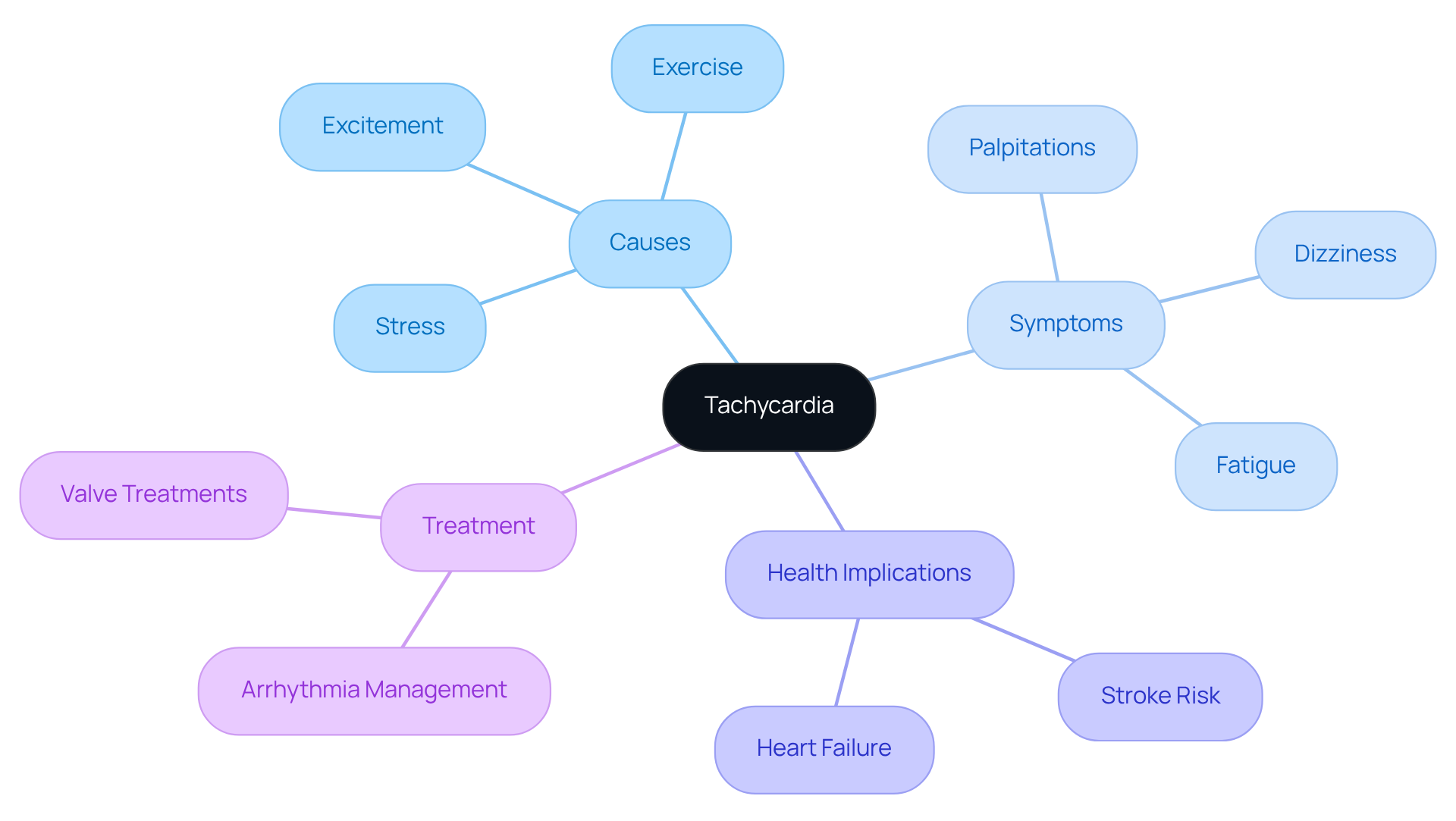
Tachycardia encompasses various types, each with distinct characteristics and implications for fast heart rate treatments, especially in older adults. Amavita's CardioElite™ program plays a crucial role in improving the management of these conditions, offering advanced, real-time diagnostic data and 24/7 cardiology consultation, which is essential for proactive care.
Understanding these forms of tachycardia is crucial for older individuals, as they may manifest differently and require customized fast heart rate treatments. Recent studies emphasize the significance of early intervention and long-term management for those with severe symptoms or comorbid cardiovascular disease. For instance, catheter ablation has demonstrated considerable enhancements in quality of life for individuals with SVT, highlighting the necessity for personalized treatment plans. The estimated prevalence of SVT is between 168 to 332 cases per 100,000 individuals, making awareness and education about these conditions paramount for effective care.

Common symptoms of tachycardia can be concerning for many, especially for our elderly loved ones. These symptoms may include:
Understanding the causes of tachycardia is equally important. They can vary widely and may include:
Recognizing these symptoms and understanding potential causes can empower elderly patients and their caregivers to respond appropriately to changes in heart rate. It’s essential to reach out for help when these symptoms arise, ensuring that support is available. Remember, you are not alone in this journey, and there are caring professionals ready to assist you.
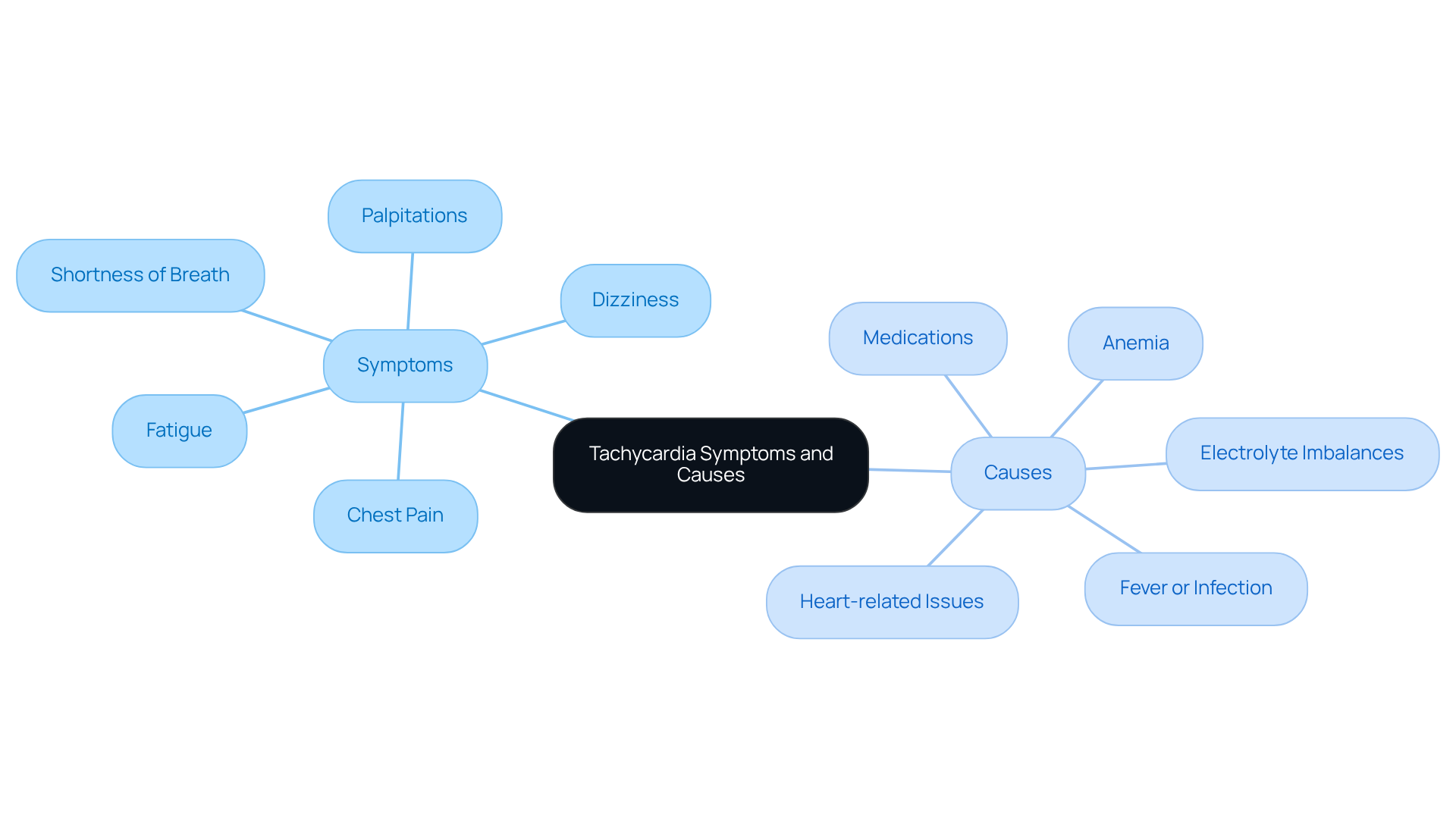
Diagnosing tachycardia in older adults requires a thoughtful and comprehensive approach, utilizing several key tests that are essential in addressing the cardiovascular challenges faced by skilled nursing facilities today. Have you or a loved one ever felt concerned about heart health? Understanding the tools available can provide reassurance and clarity.
Together, these diagnostic instruments empower healthcare professionals to precisely identify the type and reason for a rapid heart rate, facilitating personalized treatment options for older adults. Real-world examples show that timely and precise diagnosis through these methods can significantly enhance patient outcomes and quality of life. It’s important to recognize that ventricular arrhythmia and ventricular fibrillation contribute to approximately 300,000 sudden cardiac fatalities annually in the United States. This statistic underscores the significance of accurate diagnosis and management within skilled nursing facilities. Remember, you are not alone in this journey; seeking support and understanding is a vital step towards better health.
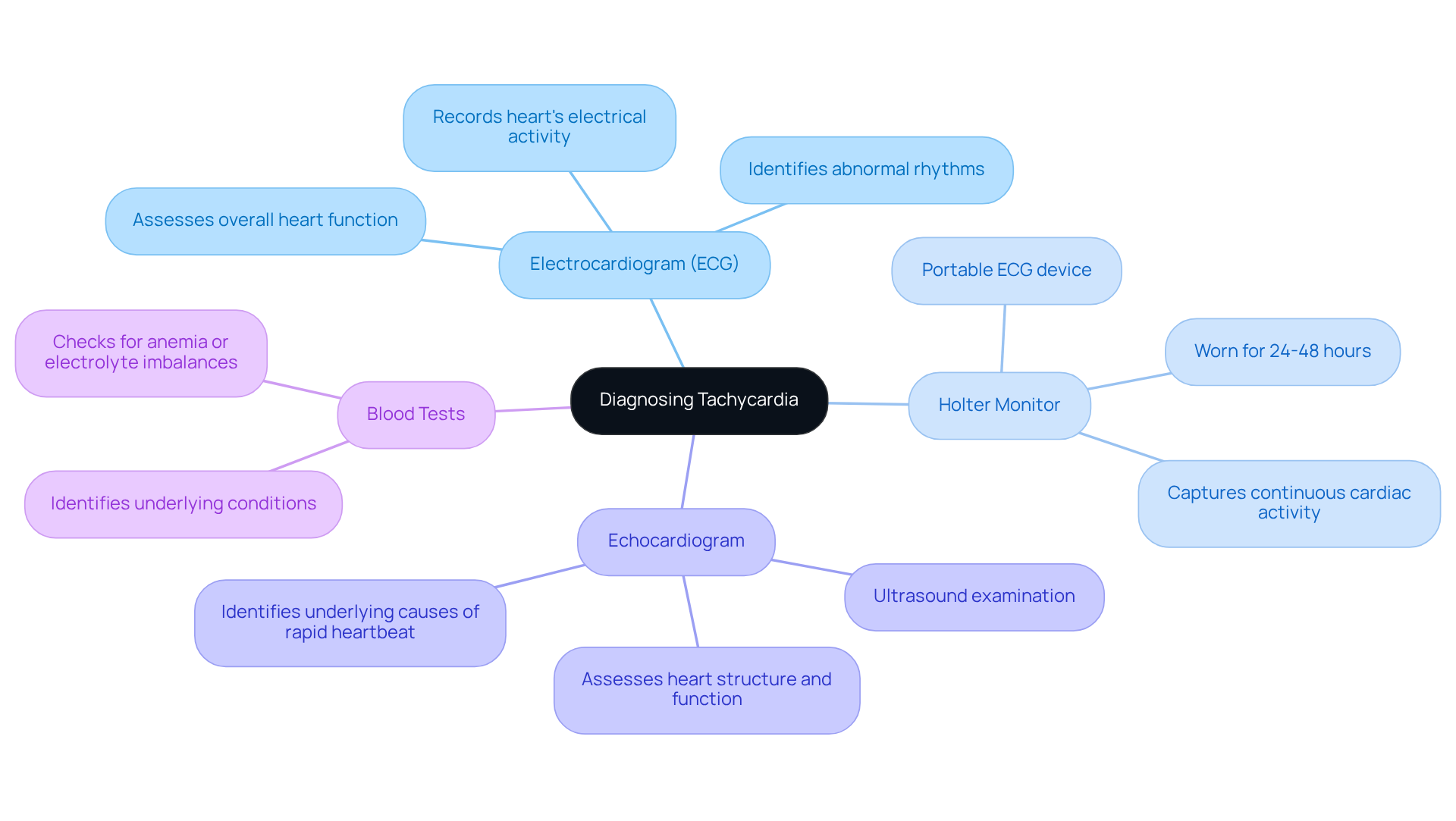
If you or a loved one is experiencing tachycardia, it's important to know that there are various fast heart rate treatments available to help.
Lifestyle modifications can also play a significant role in managing tachycardia. Simple changes, such as reducing caffeine intake, managing stress, and maintaining a healthy weight, can make a difference. Each treatment plan for fast heart rate treatments should be customized to meet your unique needs, considering your overall health, preferences, and the specific type of rapid heartbeat you may be experiencing.
Remember, you are not alone in this journey. It’s perfectly natural to feel uncertain or anxious about your health. Seeking support from healthcare professionals can provide you with the guidance and reassurance you need. Your well-being is important, and there are to help you feel better.
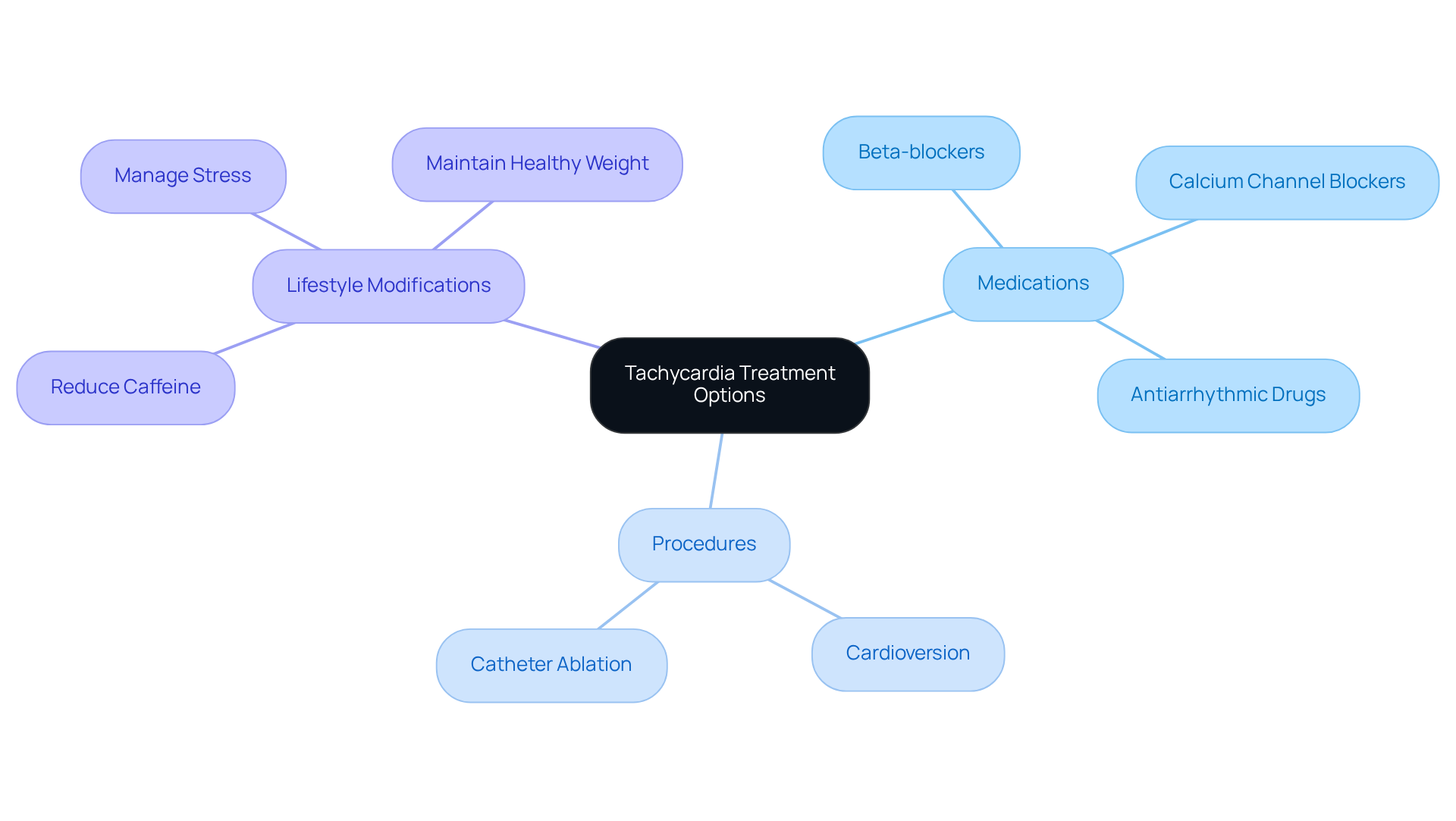
Managing tachycardia can feel overwhelming, but making simple lifestyle changes can significantly help. Here are some gentle suggestions to consider:
Implementing these changes can help manage your heart rate and serve as fast heart rate treatments to improve your overall cardiovascular health. Remember, you are not alone on this journey, and seeking support from healthcare professionals can provide you with the guidance you need. Your health matters, and taking these steps is a .
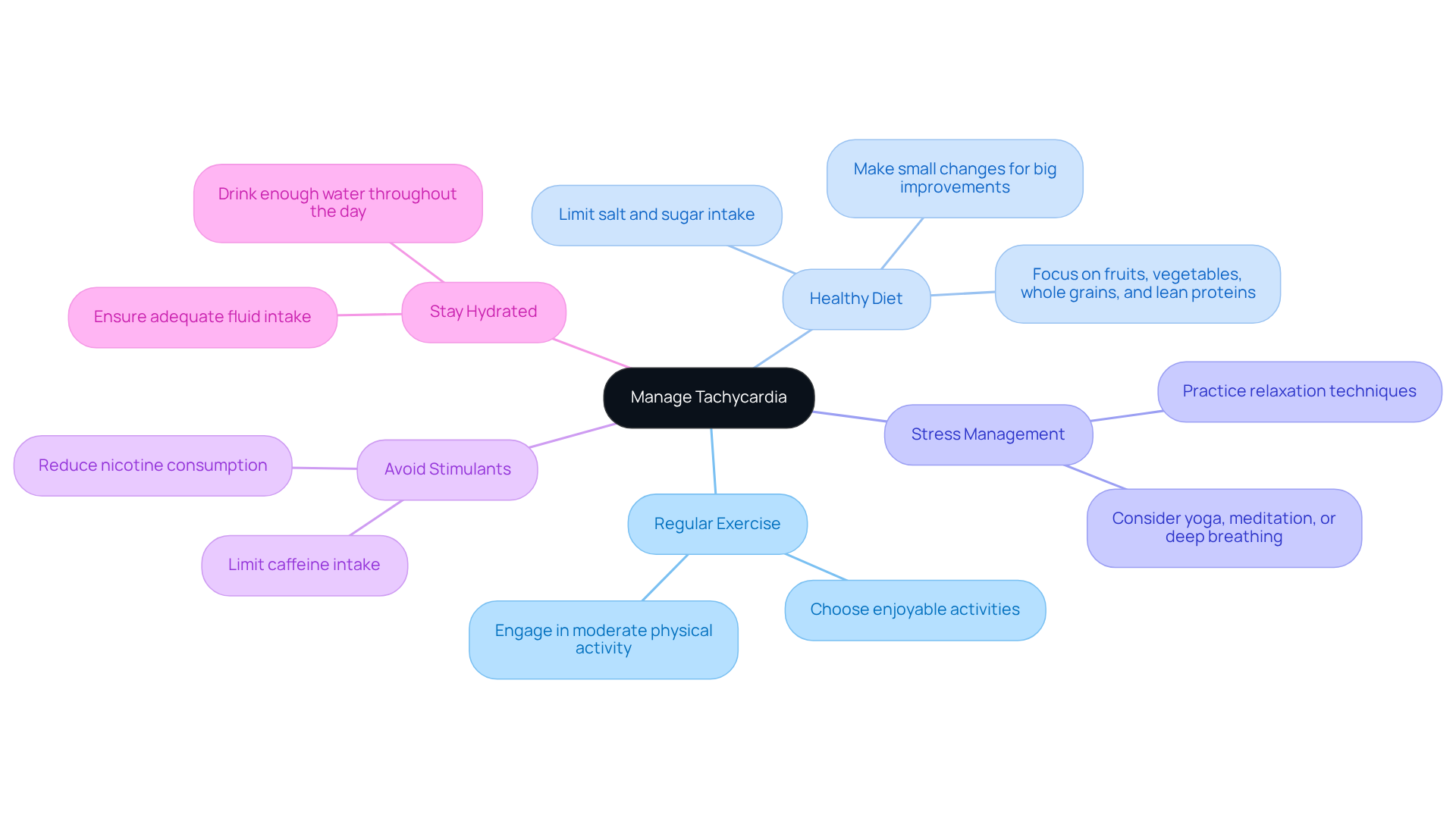
Understanding and managing tachycardia is essential for ensuring the health and well-being of elderly patients. This article has explored the complexities of fast heart rates, emphasizing the importance of recognizing symptoms, identifying causes, and seeking appropriate treatments. By highlighting the various types of tachycardia and their implications, it becomes clear that proactive management is vital in preventing serious complications.
Key insights discussed include:
Ultimately, the journey of managing tachycardia is not one that should be faced alone. Empowering elderly patients and their caregivers with knowledge and support is crucial for navigating heart health. Embracing lifestyle modifications, seeking timely medical intervention, and fostering open communication with healthcare providers can lead to improved outcomes and a healthier future. Taking these steps is a vital move towards ensuring a better quality of life for those affected by fast heart rates.
What is tachycardia?
Tachycardia is defined as a pulse rate exceeding 100 beats per minute in adults. It can be a normal response to situations like stress or exercise but may also indicate underlying health issues.
What are the common symptoms of tachycardia?
Common symptoms include palpitations, dizziness, and fatigue. Recognizing these symptoms is crucial, especially for elderly patients, as they may indicate when to seek medical attention.
Why is understanding tachycardia important for older adults?
Older adults may have different thresholds for concerning pulse rates due to age-related changes in cardiovascular function. If left untreated, tachycardia can lead to serious risks, including stroke or heart failure.
What types of tachycardia are there?
The main types of tachycardia include Supraventricular Tachycardia (SVT), Ventricular Tachycardia (VT), and Atrial Fibrillation (AFib). Each type has distinct characteristics and implications for treatment.
What is Supraventricular Tachycardia (SVT)?
SVT originates above the ventricles and can trigger sudden episodes of rapid pulse. It is common in individuals aged 45 to 64, particularly affecting women. While typically not life-threatening, it may lead to complications for those with pre-existing conditions.
What are the risks associated with Ventricular Tachycardia (VT)?
VT arises in the ventricles and poses significant risks, including haemodynamic collapse and sudden cardiac death, especially in older adults with pre-existing cardiovascular issues. Prompt management is crucial.
How does Atrial Fibrillation (AFib) affect heart health?
AFib is a common arrhythmia that results in an irregular and often rapid heart rate. Recognizing symptoms and seeking timely intervention is essential to reduce the risk of stroke and other cardiovascular complications.
What role does the CardioElite™ program play in managing tachycardia?
The CardioElite™ program provides advanced, real-time diagnostic data and 24/7 cardiology consultation, which is essential for proactive care and effective management of tachycardia conditions.
Why is early intervention important for tachycardia?
Early intervention and long-term management are crucial for individuals with severe symptoms or comorbid cardiovascular disease. Personalized treatment plans, such as catheter ablation for SVT, can significantly enhance quality of life.
What is the estimated prevalence of SVT?
The estimated prevalence of SVT is between 168 to 332 cases per 100,000 individuals, highlighting the importance of awareness and education for effective care.